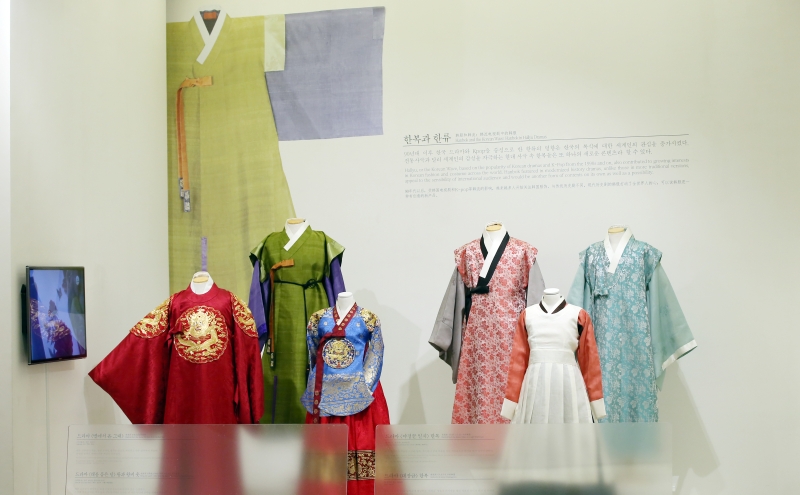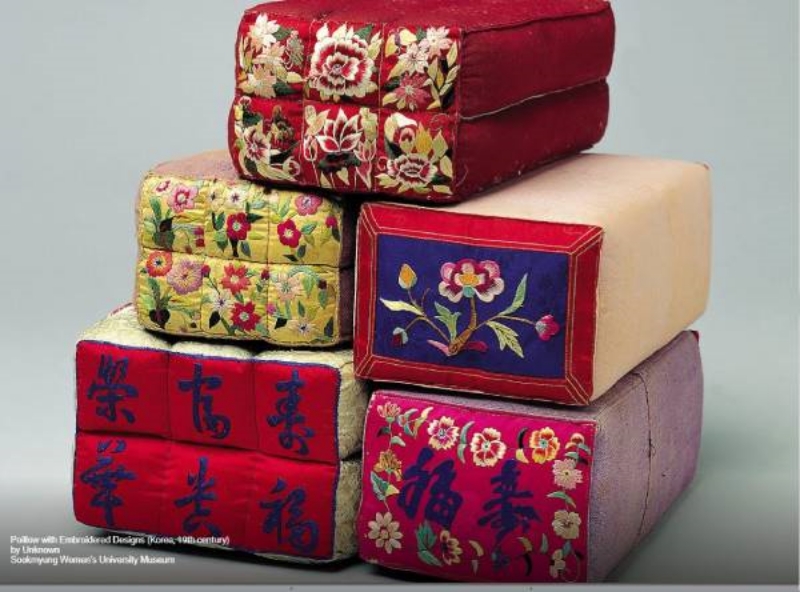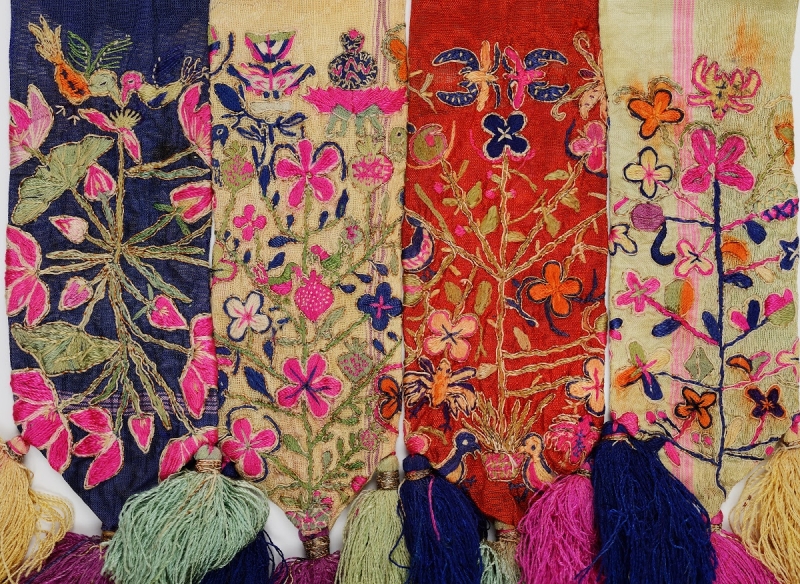- 한국어
- English
- 日本語
- 中文
- العربية
- Español
- Français
- Deutsch
- Pусский
- Tiếng Việt
- Indonesian
By Honorary Reporter Minnath Azeez from Sri Lanka
Photo = Korea.net Flickr, Sookmyung Women's University Museum
Traditional embroidery (chasu) in Korea has a history of more than 2,000 years. Since prehistoric times, the need for sewing led ancient Koreans to use needles made from fish or other animal bones to weave animal skin, tree bark and leaves. After society got more advanced, chasu was introduced as a method of adding color and detail.
4 chasu types
Pokshik chasu is embroidery on clothes and kiyong chasu that found on various materials used in the palace. Kamsang chasu represents an artistic piece and Buddhist chasu comprised embroidery details found in Buddhist temples.
Yet most of the surviving embroidery types and records of them are mainly from the Joseon Dynasty (1392-1910). Modern embroidery work in Korea has also been largely influenced by these ancient designs.
During the Joseon era, embroidery was considered an essential skill for women. With the restrictions on them in a strict Confucian society, they also used chasu as a form of expression.
A notable record of a woman's involvement in embroidery dates back to the ancient Silla Kingdom. Queen Jindeok had silk embroidery called Taepyeongsong made of 100 Chinese characters combined with embroidered lines. This work was given as a diplomatic gift to the Tang Dynasty of China, and its content was a ritual that praised Joseon King Gojong's dignity.
Chasu mainly used silk in designing the delicate work, but later in the Joseon period, materials like gold and silver were also used.
Palace officials had embroidered emblems on their Hanbok (traditional costume) with patterns that distinguished them based on rank. This was called hyungbae (official insignia) and appeared on the royal family's Hanbok as well.

Government officials had bird patterns embroidered on the front and back while those of the military had patterns of four-legged animals. The queen's Hanbok had an embroidered phoenix and a dragon was on the king's. This embroidery work was such a prominent part of the palace that it had its own department subang with skilled artisans. The latter's designs comprised gold stitches and colored threads called gungsu.
Embroidery was also practiced by commoners outside of the palace and their designs were called minsu. Unlike gungsu, these designs had no specific standards and varied depending on region or family. Making minsu also became a domestic skill passed down over generations by a family or region.

Embroidered pillow (Sookmyung Women's University Museum)
Chasu was embossed on pillows, pouches, baby hats, chopstick and spectacle cases, and even furniture. The designs varied from birds and flowers to fish, animals and lotuses, and each had its own meaning with wishes for prosperity, longevity, wealth, fertility, good luck on an exam and happiness.
Embroidery techniques
With designs and patterns that differentiated those of the palace from those of commoners, ancient Koreans used a variety of embroidery techniques.
Jaryeonsu expressed things in a realistic way through color changes using light and shade. It had irregular stitching both long and short and was mostly used when embroidering flowers, leaves and clouds in large material. Chilbosu is a unique technique nonexistent in Western embroidery used to create abstract geometric patterns.
Jinggeumsu uses a thin thread like that of gold or silver or a cord to fix a thick thread or band. And jarisu is exclusively a Korean technique to fill wide sides when shaping a mat.

Chasu (Korean embroidery) has been around since prehistoric times but most evidence of it was discovered during the Joseon Dynasty (Sookmyung Women's University Museum)
kalhong617@korea.kr
*This article is written by a Korea.net Honorary Reporter. Our group of Honorary Reporters are from all around the world, and they share with Korea.net their love and passion for all things Korean.